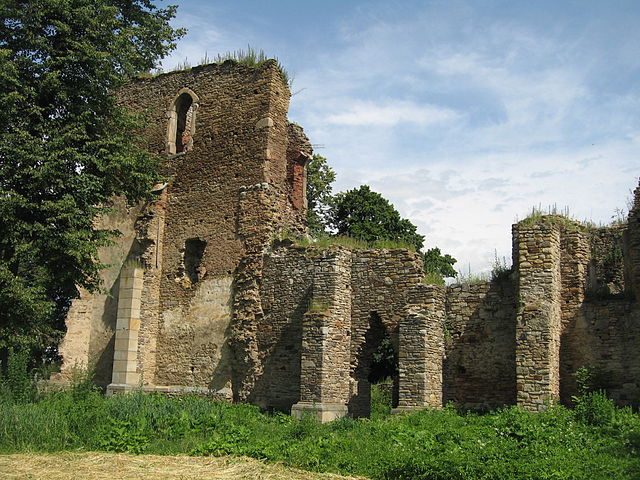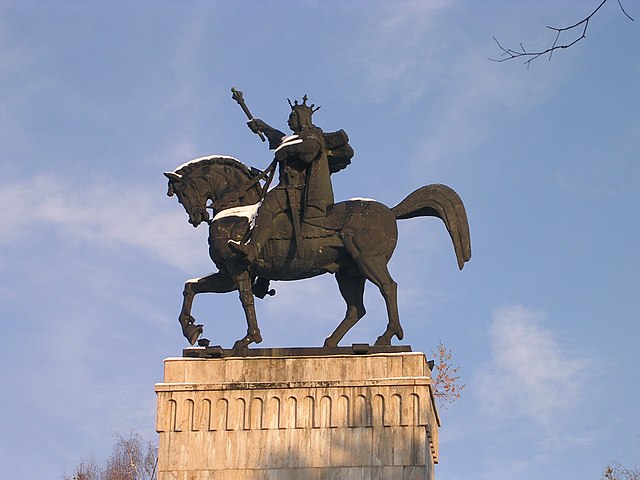Lupu Coci, known as Vasile Lupu, was a Voivode of Moldavia of Albanian and Greek origin between 1634 and 1653. Lupu had secured the Moldavian throne in 1634 after a series of complicated intrigues and managed to hold it for twenty years. Vasile was a capable administrator and a brilliant financier and was soon almost the richest man in the Christian East. His gifts to Ottoman leaders kept him on good terms with the Ottoman authorities.
Vasile Lupu
Portrait of Vasile Lupu on the Romanian Athaeneum wall.
Vasile Lupu in a Moldovan stamp of 1999
Moldavia is a historical region and former principality in Central and Eastern Europe, corresponding to the territory between the Eastern Carpathians and the Dniester River. An initially independent and later autonomous state, it existed from the 14th century to 1859, when it united with Wallachia as the basis of the modern Romanian state; at various times, Moldavia included the regions of Bessarabia, all of Bukovina and Hertsa. The region of Pokuttya was also part of it for a period of time.
The hunt of Voivode Dragoș' for the bison (by Constantin Lecca)
Ruins of the Roman Catholic Cathedral established by Transylvanian Saxon colonists at Baia (German: Moldenmarkt), Suceava County, Romania
The Seat Fortress in Suceava, Romania
Equestrian statue of Moldavian Prince Stephen the Great in Suceava







